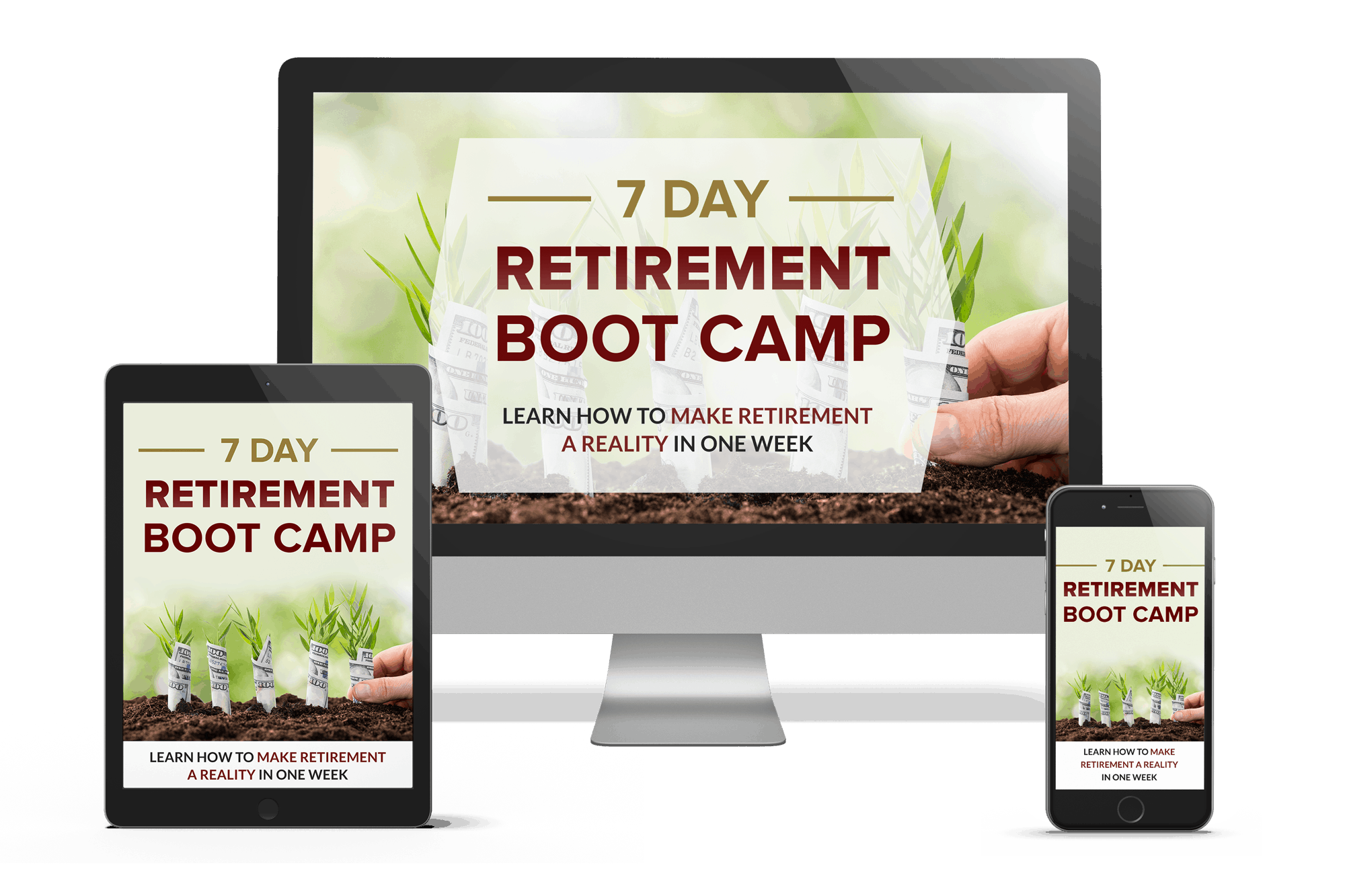THIS POST MAY CONTAIN AFFILIATE LINKS. PLEASE SEE MY DISCLOSURES. FOR MORE INFORMATION.

After 28 years at work I was able to retire with millions in the bank and my assets generating enough income to cover all retirement expenses.
Many people may think this feat was a complicated combination of sophisticated money strategies, tax planning with a gaggle of lawyers and CPAs, and ninja financial moves known only to the elite.
But you’d be surprised. I was able to hit financial independence (FI) by making three simple moves. And the good news is that they are available to everyone.
Table of Contents
3 Simple Steps To Financial Independence
I used to think becoming wealthy was complicated and required special knowledge or schooling. But as I started looking at the key drivers of my net worth, I landed on three basic steps that really mattered.
These became the basis of my blog and are as follows:
- Earn – Make the most of your career and extra earnings so you maximize income.
- Save – Control your spending. Live well below your means, saving a high percentage of your income.
- Invest – Begin by investing for growth and then later for income.
The interaction of these three is what I call the ESI scale. There are various combinations between them that can get you to financial freedom but in general, you’re going to need to be at least “good” in two of the three to reach FI.
In addition, here are a few guidelines that will help you as you work on earning, saving, and investing:
- The more you can do of each and the longer you can do it, the better.
- The more you grow your income, the more flexibility you have with the other two.
- Becoming wealthy takes time, so stick with it. This is 80% of the battle!
That’s it. All you need to know to become wealthy is contained above.
But let’s say you want more. Let’s say instead of just retiring you want to retire EARLY – really early! What would you need to do then?
Here are my top three tips for igniting your FIRE dreams:
Step #1: Make The Most Of Your Career
I know, I know. The last thing you’re looking to do is spend MORE time on your career. After all, it’s likely that you already spend 40, 50 or 60 hours a week on it. And if you’re anywhere near average, you don’t like your job that much anyway.
But consider that your career is a multi-million dollar asset and if you take the right steps you can make it worth millions more. Besides, there are seven proven steps you can take to grow your career and earn significantly more over your working lifetime. These steps don’t take a lot of time, and they may help you enjoy your career more. So why not?
Simply develop a plan for how you’d like to implement the seven steps into your career. Then take some action every day on at least one of them, no matter how small. Over time, those little efforts will add up to something significant which will ultimately be reflected in your salary.
I had to learn these truths by trial and error, so I did a lot of floundering. But even with that I was able to grow my income by over 8% per year over 28 years! You don’t have to come anywhere close to this number to have a dramatic impact on your finances. If you simply earn 5% average raises versus the 3% companies like to give out these days, you will be well on your way to FI!
Step #2: Save, Save, And Save Some More
This is really the vital step of the three. You can make all the money in the world, but if you spend it (and then some) you’re not making any progress. So you need to have some discipline and save a good amount of your income.
The keys to controlling your spending are 1) know where your money is going and 2) pick and choose your spending battles.
For the first, you’re going to need a budget. Yes, I hear the groaning now. But if you don’t know where your money is going and don’t have a plan for it, how can you hope to make financial progress?
Second, you can’t splurge on everything, so pick the categories most important to you and spend there. On the less important ones, that’s where you save. I call this moderate and selective frugality.
For example, travel may be in the first category for one person, but another could totally do completely without it. Eating out often may be vital for another but someone else might be fine with mostly home-cooked meals. Simply pick your spending battles so you can both save as much as you can, as well as enjoy your life.
We had a budget throughout my working years. We tracked every dime on Quicken and managed the budget with a spreadsheet. It helped us decide where we wanted to spend and where to cut back. Over time as our income grew and so did our net worth, we were able to spend a bit more and still save more. Over the course of 20 years we saved 36% of our gross income!
By the way, it’s easier to save more when you make $75k a year versus $50k, which is another great reason for growing your income.
Step #3: Invest As Much As You Can As Often As You Can
Once you have saved money, it’s time to put that money to work so it can start growing on itself. The best way to do this is with low-cost index funds. You can do it with as little as three funds.
Simply plow as much savings into index funds as you can and let it grow for as long as you can. There are lots of ways to do this. IRA’s, 401k’s, Roth IRA, and DRiP’s are all vehicles that can come right out of your paycheck so you never miss the money.
It’s really as simple as that. Your money will grow over time and then 20 to 30 years down the road, you’ll be financially independent.
Eventually, you’ll likely want to convert these investments over to higher income-producing assets so that you can retire early. For me, that meant investing in real estate. For you it could mean the same, or something else like dividend investing, P2P lending, and so forth.
Your Path to FI
As I said at the beginning, there are many paths to working the ESI scale to FI. It’s up to you to choose your own. You may have a lower income but higher savings rate than we did. You may be a better investor (we did waste five years getting started). Or you may earn more.
Whatever your path, these are the three areas you need to consider and work on to hit FI.
Sit down and develop a plan for each – how to grow your earning ability, how to save more, and how to plow more into investments – then get to work. Begin immediately and use time to your advantage. This will start the FIRE.
Then keep with it. Twenty years down the road you’ll look up and that little spark today will be a raging fire and you’ll be ready to retire.
I have over 15 years experience in the financial services industry and 20 years investing in the stock market. I have both my undergrad and graduate degrees in Finance, and am FINRA Series 65 licensed and have a Certificate in Financial Planning.
Visit my About Me page to learn more about me and why I am your trusted personal finance expert.


